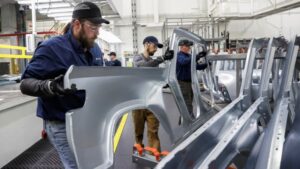
With the introduction of new laws, such as the CHIPS and Science Act and the Inflation Reduction Act of 2022, the Biden administration has been betting big on industrial policies to bring manufacturers back to the United States.
“If you look at the three pieces of legislation that were passed in about the last two years, you’re looking at, give or take, more than $1 trillion in new government spending on industrial policy,” said Scott Lincicome, the vice president of general economics at the Cato Institute. “And it could be even more depending on a bunch of open-ended tax credits.”
This isn’t the first time the U.S. government has spent tax dollars to guide industrial policy. If successful, industrial policies can potentially lead to big payoffs.
“An example would be the development of mRNA vaccines for Covid,” said Ed Gresser, vice president and director for trade and global markets at the Progressive Policy Institute. “They put out a goal for business to do and they financed it and the business delivered on it. That cost a lot of money but I think most people would say it was well worth it.”
Today, the policies coming from Washington are heavily skewed toward two sectors: semiconductors and electric vehicles.
Linicicome argues the government should not be playing favorites with industries. “Politicians and bureaucrats are ill-suited to pick winners in the market,” Lincicome said. “We are headfirst into electric vehicles today and we’re running the risk of pushing a technology that isn’t quite ready for prime time and in the process sidelining a technology that maybe turns out to be a better approach.”
